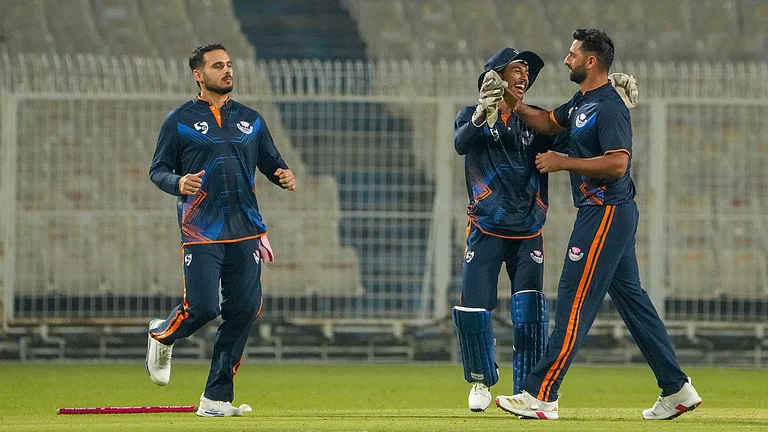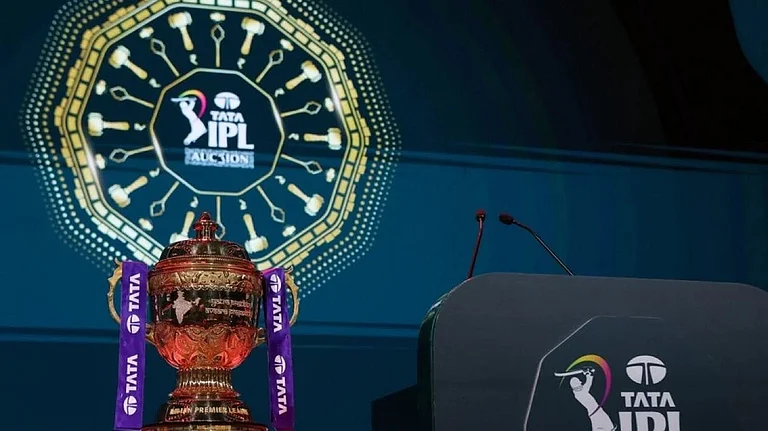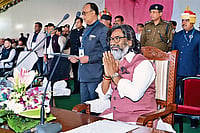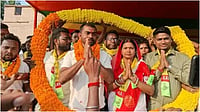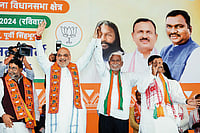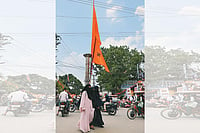Ever since he became the chief minister of Jharkhand in 2019, Hemant Soren never missed an opportunity to reiterate that he is the ‘only Adivasi CM’. However, that status has changed now. The decision of the BJP to appoint Adivasi leader Vishnu Deo Sai as the CM of Chhattisgarh surprised many, but political insiders believe this is a masterstroke by the party at a time when Soren’s evocation of Sarna dharma against the Hindutva narrative has gained popularity among Adivasis in the Hindi heartland.
Notably, Sai is the first Adivasi CM of Chhattisgarh since the formation of the state in 2000. “The state has not got a single Adivasi CM even after having a 31 per cent tribal population. This decision is not only going to amend the past mistakes but also has broader implications in the bordering state of Jharkhand that is going to the polls in 2024,” says an Adivasi activist based in Jharkhand.
Chhattisgarh was not the only surprise. In Madhya Pradesh, the BJP brought in former education minister Mohan Yadav as the new face, sidelining four-time CM Shivraj Singh Chouhan—even though the party gained an overwhelming majority banking on schemes promoted by him and his popularity. Political analysts think that the appointment of Yadav as a CM will have multiple consequences. The strategic move is not only going to cater to the OBC vote bank in a state that is estimated to have more than 50 per cent OBC population; but it will also have an impact in Bihar and Uttar Pradesh, where the Yadavs have always sided with the Rashtriya Janata Dal (RJD) and the Samajwadi Party (SP), respectively.
After Babulal Gaur, who became the CM following Uma Bharti’s dismissal in 2004, the state didn’t have any Yadav leader. “One has to look into the politics of Uttar Pradesh and Bihar to understand Yadav’s selection. After the Bihar caste survey, they understood the population strength of the Yadavs. They have given a savarna CM to UP; so, to influence the politics of Bihar, they chose a Yadav in MP,” says Sulabh Singh, a political strategist based in Bhopal.
The politics of representation is not limited to the OBCs and tribals. The party chose Jagdish Devda—a Dalit leader—as one of Yadav’s deputies. While Adivasis-Dalits-OBCs are given representation in Chhattisgarh and MP, in Rajasthan they deputed Bhajan Lal Sharma, a first-time MLA and a Brahmin.
Reflecting on the politics of representation, Ashish Agarwal, the BJP spokesperson in MP, says: “The Congress makes only fake promises and the BJP walks the talk.”
Analysts feel factors like the resurgence of OBC politics, followed by the Bihar caste census and the Opposition’s demands to hold a caste survey, have been strategically reined in by the BJP’s politics of social engineering.
Post-Mandal Social Engineering
The concept of social engineering politics gained traction after the former Prime Minister V P Singh’s implementation of the Mandal Commission report that opened the floodgates of protests—both for and against OBC reservation. Parties like the SP, RJD, Janata Dal (United), and the Bahujan Samaj Party (BSP) fixed their own constituencies—depending on the numbers and their support base. The BJP was not far behind.
In the 1980s and 1990s, organisations affiliated to the RSS started giving representation to ‘backward caste’ leaders following instructions of their ideologue KN Govindacharya. It was when leaders like Uma Bharti, Kalyan Singh, Sushil Modi, Narendra Modi, Shivraj Singh Chouhan, and Bangaru Laxman took the political centre stage. This politics of bringing backward caste leaders to the forefront was termed by Govindacharya as ‘BJP’s attempt at social engineering’.
On the one hand, a section of the BJP continued to oppose the implementation of the Mandal Commission report, saying that “all Hindus come under one umbrella”; on the other, they tried to “shift the terms of political debate from Mandal and caste to religion by resurrecting the old crusade for the construction of the Ram temple at Ayodhya at the site where stood the Babri masjid, for this was Lord Ram’s birthplace”.
The implementation of Mandal Commission report paved the way for social justice politics in the Hindi heartland. Political leaders like Lalu Prasad Yadav, Nitish Kumar, Mulayam Singh Yadav, Ram Vilas Paswan, to name a few, shot to fame and garnered formidable mandates in their respective constituencies. The BJP understood the implication of such politics very well, given the percentage of OBC votes.
Catering to Non-dominant Castes
Since 2014, the party, however, adopted a different social engineering strategy. To confront the dominant OBC castes like the Yadavs, it shifted its focus to the less-dominant castes like the Kurmis and Mauryas. Among Dalit groups, it started targeting non-Jatav communities and gave them representation. In the 2019 Lok Sabha elections, the party reaped the benefits of the changed strategy. It defeated the SP-BSP alliance and won 64 of the 80 seats in UP.
While talking about the BJP’s successful negotiation with caste politics, Satish K Jha, a Delhi-based political analyst, says: “Social engineering of the BJP predates the caste survey and the Congress party’s recent approach towards this. The BJP has successfully done social engineering in UP by giving representation to some of the backward castes that were denied their due share in the SP and BSP regimes.”
However, the latest strategy of the INDIA alliance to evoke caste census again has forced the BJP to modify its social engineering politics. That the selection of a Yadav leader as the CM of MP would not only impact the OBC politics of the state, but also have an influence on the politics in UP could be gauged from the first speech he gave after he was sworn in. Evoking the sentiments on Ram Mandir that is going to be inaugurated in January, he said: “Kar sevaks were subjected to atrocities at the UP border during the Ram Mandir andolan.”
The social engineering of the BJP is based on the consideration that neither backward nor upper castes are monolithic entities and politics is an art to find space for new electoral alignment and re-alignment with various caste groups based on several local factors—the primary ones being their numerical strength, their sense of deprivation of political power and their yearning for representation, adds Jha.
In Chhattisgarh, the party selected a Sahu OBC as Sai’s deputy, along with Vijay Sharma, a Brahmin face. A similar strategy has been followed in MP, where they have chosen a Dalit and a Brahmin as deputy CMs. “The BJP has come up with the idea of two deputy chief ministers to give representation to all major communities. The four individuals in the three states represent their communities significantly,” says Yatindra Singh Sisodia, a Bhopal-based political analyst.
Does this new form of social engineering have the potential to impact the caste census demands of the INDIA alliance? Sisodia thinks that during the assembly elections, caste census was a major campaign issue for the Congress, although, it has not paid any visible political dividend to the party. The major idea, however, was to create a rift in the big block of this class. The BJP does not want the issue of caste census to gain momentum ahead of the 2024 elections. This move of leadership distribution may help spread the narrative that they have already touched upon the caste factor and don’t want other political parties to make it a political issue, he adds.
(This appeared in the print as 'The Politics Of Social Engineering')









